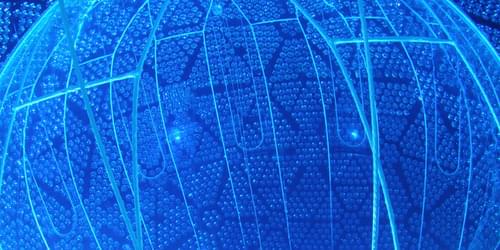Researchers have captured the signal of neutrinos from a nuclear reactor using a water-filled neutrino detector, a first for such a device.
In a mine in Sudbury, Canada, the SNO+ detector is being readied to search for a so-far-undetected nuclear-decay process. Spotting this rare decay would allow researchers to confirm that the neutrino is its own antiparticle (see Viewpoint: Probing Majorana Neutrinos). But while SNO+ team members prepare for that search, they have made another breakthrough by capturing the interaction with water of antineutrinos from nuclear reactors [1]. The finding offers the possibility of making neutrino detectors from a nontoxic material that is easy to handle and inexpensive to obtain, key factors for use of the technology in auditing the world’s nuclear reactors (see Feature: Neutrino Detectors for National Security).
The SNO+ detector was inherited from the earlier Sudbury Neutrino Observatory (SNO) experiment. Today the detector is filled with a liquid that lights up when charged particles pass through it. But in 2018, to calibrate the detector’s components and to characterize its intrinsic radioactive background signal after the experiment’s upgrade, it contained water. The antineutrino signal was observed when, after completing those measurements, the researchers took the opportunity to carry out additional experiments before the liquid was switched out.
